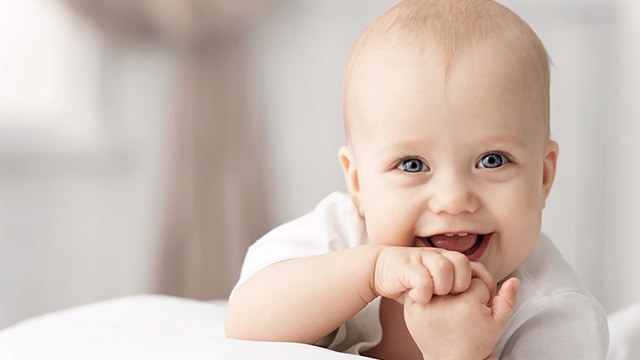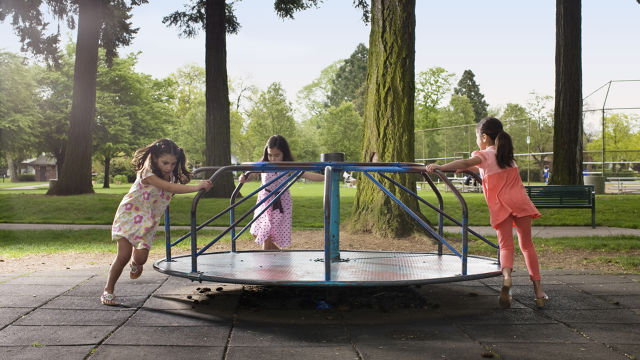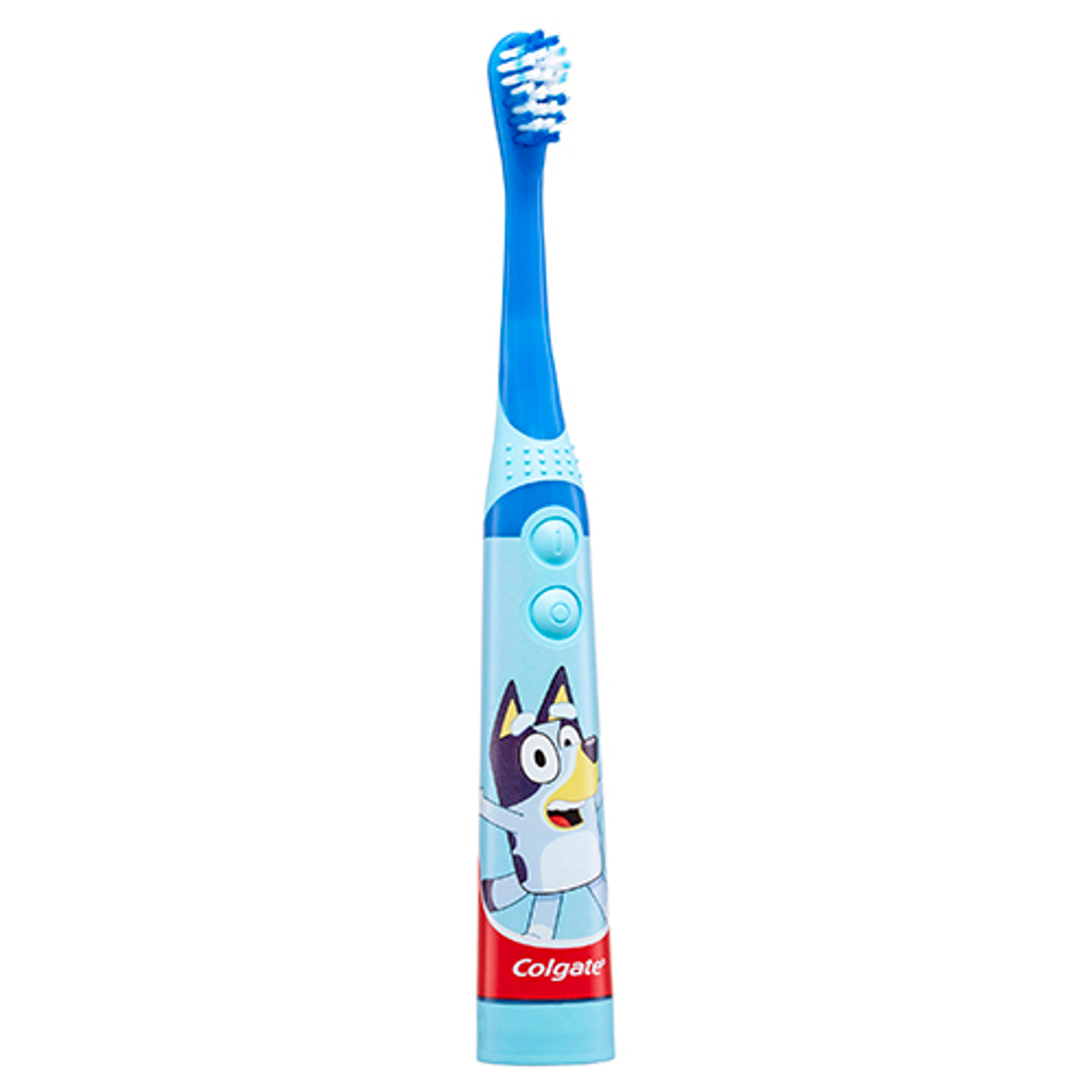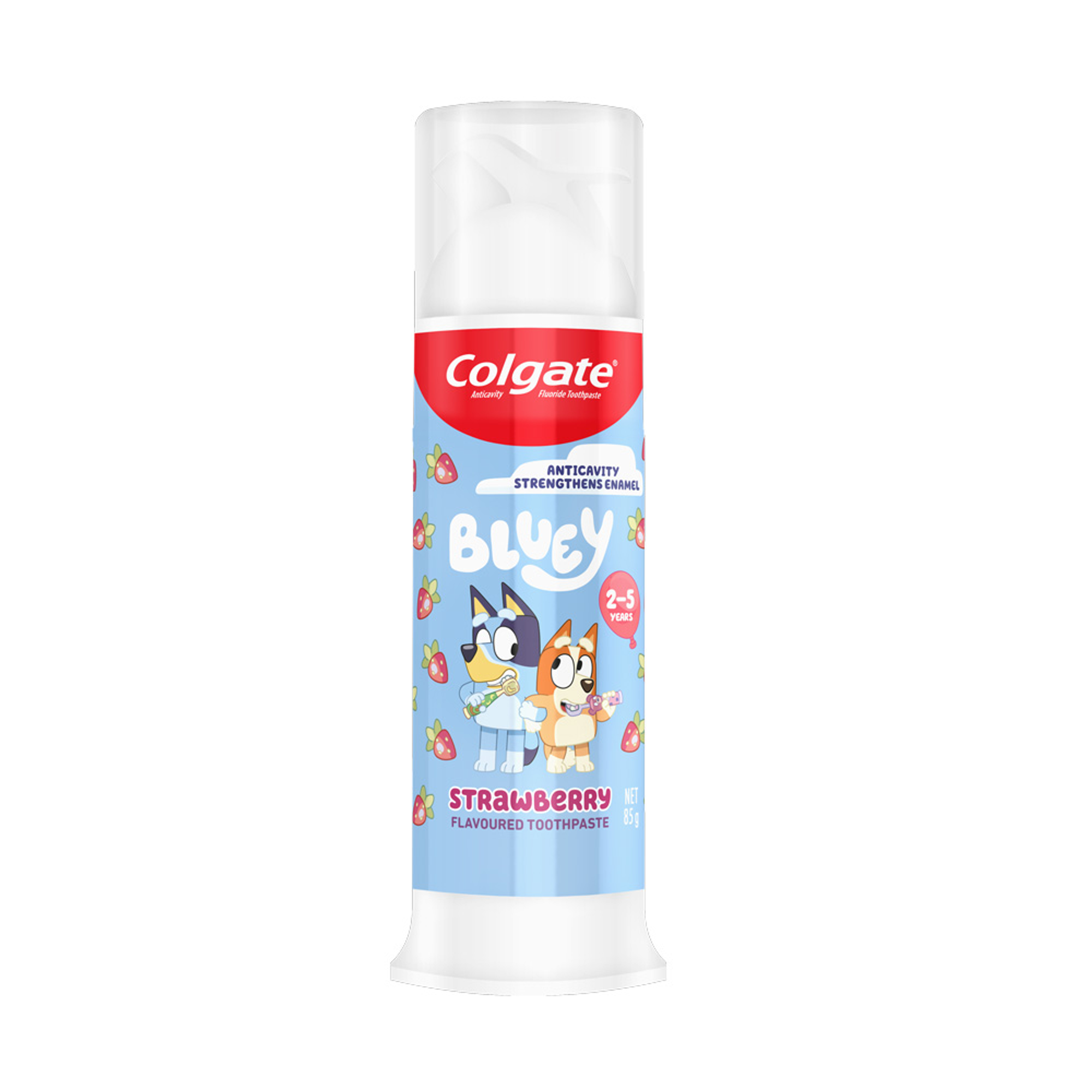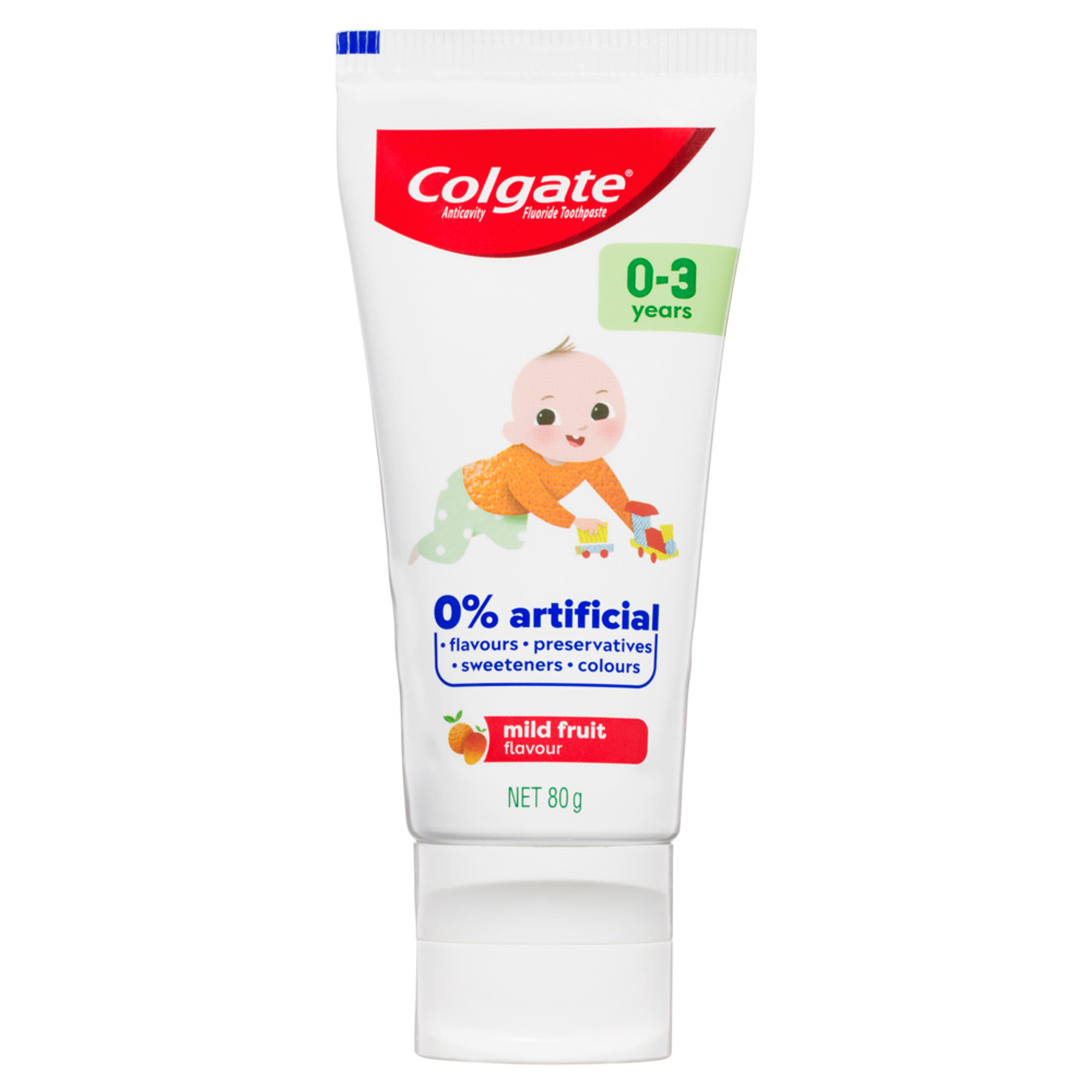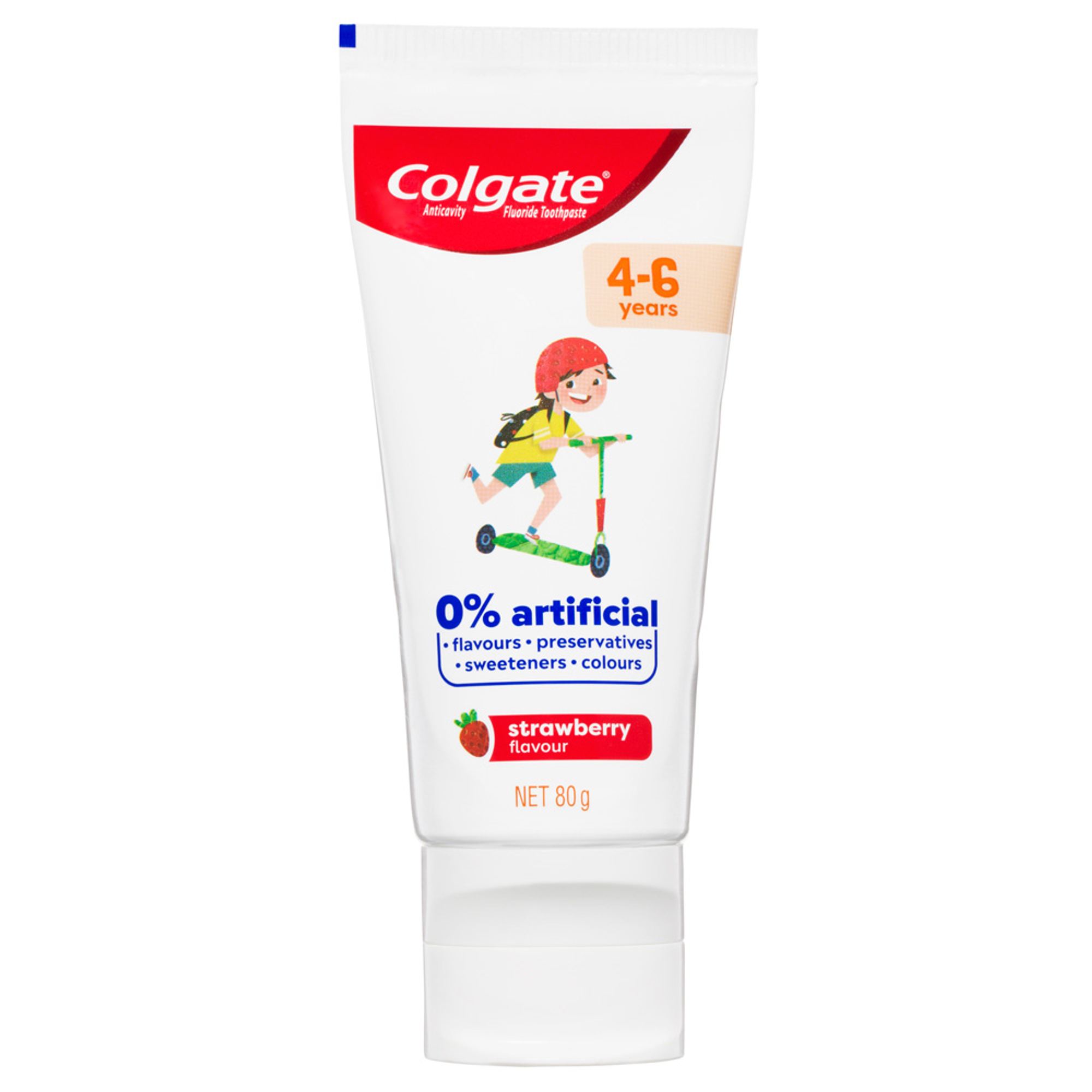What is teething and when does it start?
Did you know that your baby starts growing their baby teeth in their gums before they’re even born?! Teething happens when those teeth start to break through the surface.
The Australian Dental Association (ADA) says that the first tooth usually appears at around 9 months old, but it can happen anywhere between 3-12 months (so don’t worry if your little one’s teeth are a bit early or late!). Here’s a general timeline of when each baby tooth should make its grand entrance.
- 6-12 months: The four front-and-centre teeth (central incisors) should appear, starting with the bottom two.
- 9-16 months: The two teeth either side of the front teeth (the lateral incisors) are now on the way.
- 13-19 months: The top pair of first molars (back teeth) should be arriving, followed by the bottom pair.
- 16-23 months: The top two canines (“fang” teeth) appear next, followed shortly after by the bottom two.
- 23-33 months: Finally, the top pair of second molars appears, with the bottom pair close behind.
By age 3, your child will likely have all 20 baby teeth, but don’t wait to book that first appointment! It’s important to start dental visits as soon as the first tooth erupts.
Signs of teething
Symptoms of teething vary from child to child. So, how can you tell if your baby is teething? Some babies feel no pain, while others may have pain and tenderness that lasts for several weeks. A baby may show one or more of the following signs of teething:
- Rubbing their gums. Babies generally love to put things in their mouths but rubbing things on their gums may become excessive when the teething process begins.
- Drooling. Some babies drool so much from teething that it soaks their clothes, and they develop a rash on their cheeks and chin from the excess moisture. To keep your baby comfortable, gently dry their chin and change wet clothes throughout the day.
- Crankiness. If your baby seems cranky despite otherwise being healthy, a tooth may be pushing through.
- Wakefulness. If your once-great sleeper has begun waking up at night or is refusing to take naps, it may be a sign of teething.
- Loss of appetite. If your baby is on a nursing/eating strike, it may be that eating is irritating their sore gums but if you're concerned that your baby isn't eating enough, check in with your GP.
These signs, may indicate your baby is teething but could also be signs of illness. While teething might cause a slight change in your child's behaviour, fever is not one of the typical symptoms of teething, nor is diarrhoea. You should contact your GP or an on-call doctor if your child has any concering symptons or develops a fever or diarrhoea because it could be a sign of something else.
How to manage teething
The good news is that there are options for teething pain relief. However, it’s important to check in with your GP first before giving your baby pain medication. They'll be able to offer you specific recommendations and dosage information according to your baby’s needs.
You might also be considering a teething gel, but Better Health notes that teething gels containing choline salicylate or benzocaine are not recommended for use in children. As always, you should check with your child's dental professional or GP before using any product for teething relief.
There are lots of other ways to soothe your teething baby, including refrigerating (but not freezing) your baby's teething ring or using a clean finger to gently massage the gums. A warm bath and gentle rocking may also help to calm and relax your baby.
Caring for your baby's new teeth
Follow these tips to keep your baby’s smile happy and healthy:
- Start using a soft washcloth and water to gently clean your baby's mouth, even before the first tooth arrives.
- After the teeth have come through, switch to a soft baby toothbrush and an age appropriate toothpaste.
- Make sure to use only a tiny smear.
- Try to teach your child to spit after brushing as early as possible.
At your baby's first dental appointment, your dental professional will guide you through caring for your baby's teeth and gums in more detail.
Now you know more about teething and the key signs to look out for, like gum rubbing, crankiness, and sleep or appetite changes. When you spot these signs, you can help your baby come through the teething experience with a happy, healthy smile! Remember that fever and diarrhoea are not symptoms related to teething, though, so be sure to reach out to your GP if your baby is experiencing either of these.
This article is intended to promote understanding of and knowledge about general oral health topics. It is not intended to be a substitute for professional advice, diagnosis or treatment. Always seek the advice of your dentist or other qualified healthcare provider with any questions you may have regarding a medical condition or treatment.





